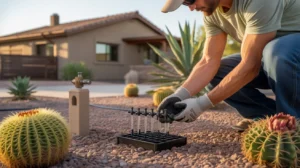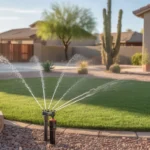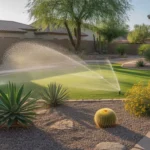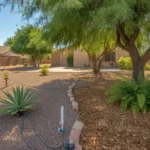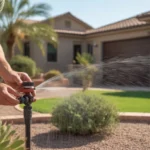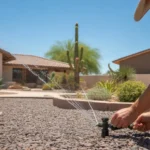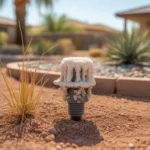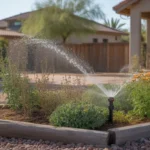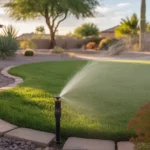As the summer heat reaches its peak in Queen Creek, it’s the perfect time to conduct a midsummer irrigation audit. Regularly checking your irrigation system ensures it’s operating at peak efficiency and delivering the right amount of water to keep your plants healthy, even during the most intense months. A midsummer audit can catch small issues before they become big problems and help you fine-tune your watering schedule for optimal results.
Why Midsummer Irrigation Audits Matter in Queen Creek
Queen Creek summers are notoriously harsh on landscapes. With temperatures routinely soaring over 100°F and humidity dropping to single digits, plants are under constant stress. Even desert-adapted species need consistent moisture to survive and thrive. A midsummer irrigation audit is your best tool for making sure your yard gets the water it needs without waste.
During an audit, you’ll methodically check each component of your irrigation system, from the controller settings to the emitters, looking for leaks, clogs, pressure issues, and coverage gaps. You’ll also evaluate your plants’ water needs based on weather conditions, growth stage, and signs of stress. With this information, you can adjust your watering schedule and make targeted repairs to optimize your system’s performance.
Skipping a midsummer audit leaves your yard vulnerable to the cumulative effects of heat and drought. Small inefficiencies that weren’t a problem in spring can escalate to major plant health issues and water waste by late summer. Being proactive with a July or August checkup is the key to keeping your Queen Creek landscape lush and vibrant straight through to fall.
5 Key Areas to Assess in Your Midsummer Audit
A thorough irrigation audit means inspecting your entire system from start to finish. As you work through each zone, pay special attention to these critical components:
- Controller settings: Double check that your watering frequency and run times are appropriate for the current weather conditions. Queen Creek yards often need more frequent, slightly longer watering in midsummer compared to spring.
- Valves and pressure regulators: Look for leaks or inconsistent pressure that could indicate a malfunctioning valve or regulator. Low pressure is a common culprit behind poor water delivery in summer.
- Filters and emitters: Clean out any clogs or mineral buildup that may be restricting flow. Replace damaged or missing emitters to ensure even coverage.
- Distribution uniformity: Use catch cups to measure how evenly water is being applied within each zone. Make adjustments to improve uniformity and eliminate dry spots.
- Plant health: Note any signs of water stress like wilting, yellowing, or crispy leaf edges. Compare to your audit results to determine if poor watering is the cause and make corrections.
Smart Water Management in Extreme Heat
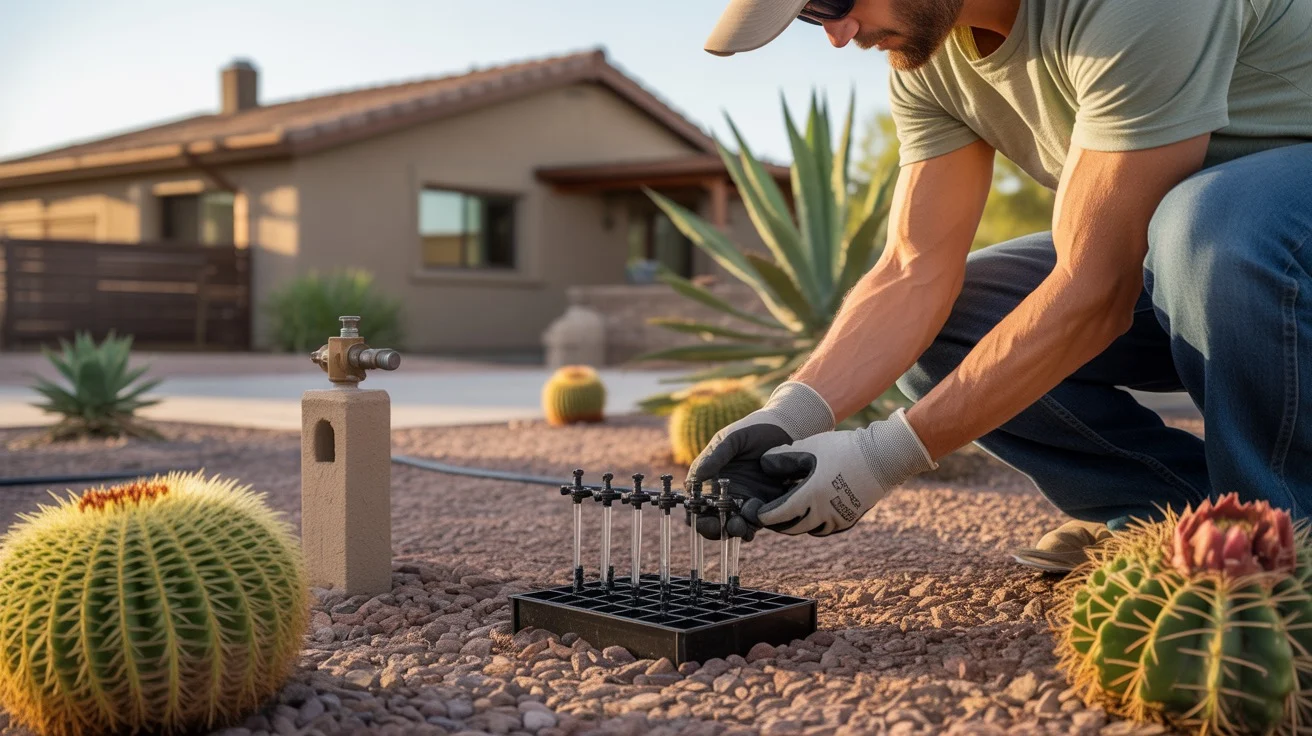
In addition to your core audit, midsummer is a smart time to assess your overall water management strategy. Queen Creek’s intense heat and low rainfall make water conservation a top priority for responsible landscaping. Look for opportunities to fine-tune your system for greater efficiency without compromising plant health.
If you haven’t already, consider upgrading to a smart irrigation controller that automatically adjusts watering based on local weather data. These controllers can be especially useful for keeping up with Queen Creek’s monsoon season, where sporadic downpours often catch homeowners off guard. A smart controller will immediately cancel watering after a major rain event to prevent oversaturation and runoff.
It’s also a good idea to reassess your water delivery method in problem areas. If you’re struggling to keep a particular zone thriving with spray irrigation, it may be time to switch to a drip system or add more emitters for targeted watering. Drip irrigation is often the most efficient choice for Queen Creek’s arid climate, as it delivers water directly to plant roots with minimal evaporation and overspray.
Timing Your Audit for Best Results
For most Queen Creek yards, the ideal window for a midsummer irrigation audit is mid-July to early August. This allows you to assess your system’s performance at the height of summer stress and make adjustments while there’s still time to correct course before fall.
If you have a large or complex yard, consider breaking your audit into smaller chunks over a week or two. This allows you to give each zone the attention it deserves without getting overwhelmed or rushing the process. Start with your highest priority areas like vegetable gardens or newly planted trees, then work your way methodically through the rest of your landscape.
Evening watering can be a helpful strategy for conducting your audit in Queen Creek’s intense midday heat. Plan to run each zone briefly just before dusk so you can observe it in action without battling sun and sweat. Make sure to take good notes as you go, as it’s easy to lose track of details when auditing multiple zones over several days.
Following Up After Your Audit
Once you’ve completed your midsummer irrigation audit, it’s important to act on your findings promptly. Make any necessary repairs or adjustments to your system as soon as possible to get your watering back on track. Update your irrigation schedule to reflect any changes in plant water needs or weather patterns you’ve observed.
Keep an eye on your landscape in the weeks following your audit to see how it responds to the tweaks you’ve made. If you notice areas that still seem stressed or thirsty, don’t hesitate to make further adjustments. Irrigation is an ongoing process of monitoring and adapting to changing conditions, especially in a climate as harsh as Queen Creek’s.
By staying diligent with midsummer audits and following through on necessary improvements, you can keep your irrigation system running at peak efficiency all summer long. You’ll be rewarded with a healthier, more resilient landscape that can handle whatever the Arizona heat throws at it – and a lower water bill to boot. So don’t let the summer slip away without giving your irrigation the midsummer checkup it needs to thrive.

